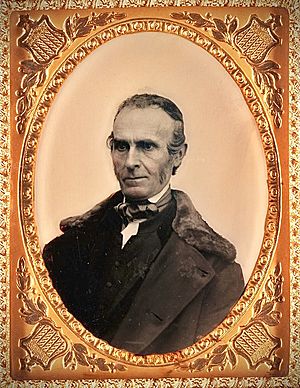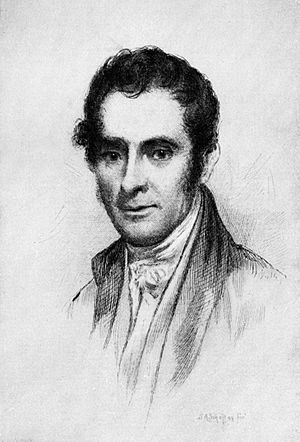John Greenleaf Whittier facts for kids
Quick facts for kids
John Greenleaf Whittier
|
|
|---|---|
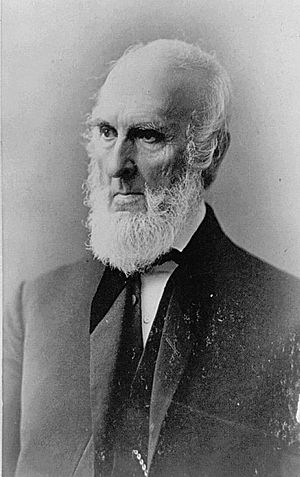
John Greenleaf Whittier, 1885
|
|
| Born | December 17, 1807 Haverhill, Massachusetts, U.S. |
| Died | September 7, 1892 (aged 84) Hampton Falls, New Hampshire, U.S. |
| Occupation | Editor, poet |
| Relatives | Elizabeth Hussey Whittier (sister) |
| Signature | |
John Greenleaf Whittier (born December 17, 1807 – died September 7, 1892) was an American poet. He was a Quaker, a religious group known for peace and social justice. Whittier was also a strong supporter of ending slavery. He is often called one of the fireside poets, a group of popular American poets from the 19th century. His writings against slavery and his famous 1866 book Snow-Bound are some of his most remembered works.
Contents
Growing Up and Learning
Whittier was born on December 17, 1807, in Haverhill, Massachusetts. He grew up on a farm with his parents, brother, and two sisters. Many visitors and farm workers were always around. As a boy, he found out he was color-blind. This meant he couldn't tell the difference between ripe and unripe strawberries.
The family farm did not make much money. Whittier was not strong enough for hard farm work. He had poor health throughout his life. Even though he didn't go to school much, he loved to read. He studied his father's books about Quakerism. These teachings shaped his ideas about life. His religion taught him to be kind, caring, and responsible to others.
Starting His Career
Whittier first learned about poetry from a teacher. His sister, Mary, sent his first poem, "The Deity," to a local newspaper. The editor, William Lloyd Garrison, published it on June 8, 1826. Garrison and another editor encouraged Whittier to go to Haverhill Academy.
To pay for school, Whittier worked as a shoemaker. He also taught in a one-room schoolhouse. He went to Haverhill Academy from 1827 to 1828. He finished high school in just two terms.
A writer named John Neal praised Whittier's work in 1828. Whittier looked up to Neal and promised to stop writing if Neal didn't like his poems. Neal told him to "Persevere," meaning to keep trying. Reading Neal's book Rachel Dyer made Whittier want to write about New England stories, including old tales of witchcraft.
Whittier became an editor for different newspapers. He edited a newspaper about the temperance movement, which aimed to reduce alcohol use. Later, he became editor of the New England Weekly Review in Hartford, Connecticut. This was an important newspaper for the Whig Party. In 1838, he secretly published a poem called "The Song of the Vermonters, 1779." People thought Ethan Allen wrote it for almost 60 years. Whittier finally said he wrote it in 1858.
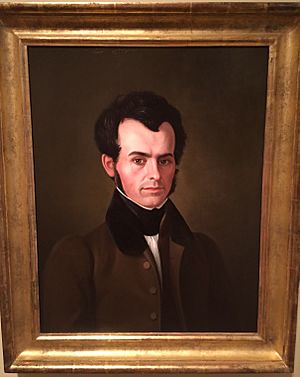
Fighting Against Slavery
In the 1830s, Whittier became very interested in politics. After losing an election, he had a nervous breakdown and went home. In 1833, he started talking with William Lloyd Garrison again. Garrison encouraged him to join the fight against slavery.
In 1833, Whittier published a pamphlet called Justice and Expediency. From then on, he spent 20 years working to end slavery. He helped start the American Anti-Slavery Society. He signed the Anti-Slavery Declaration of 1833, which he felt was the most important thing he ever did.
Whittier was good at politics. He worked to convince leaders in Congress to join the abolitionist cause. From 1835 to 1838, he traveled a lot in the North. He went to meetings, got people to vote, spoke to crowds, and talked to politicians.
From 1838 to 1840, he edited the Pennsylvania Freeman in Philadelphia. This was a major anti-slavery newspaper. In May 1838, its office was burned down by a mob that supported slavery. Whittier kept writing poems, and most of them were about slavery.
In 1838, Congress passed a rule called the "Atherton Gag." This rule stopped Congress from talking about petitions to end slavery. Whittier wrote poems calling this rule "vile." The rule was finally removed in 1844.
The abolitionist movement started to split in the late 1830s. Whittier believed that political action was needed to end slavery. He knew that laws had to change. This led to a disagreement with Garrison. Whittier then helped start the Liberty Party in 1839. In 1840, he went to the World Anti-Slavery Convention in London. By 1843, he saw the Liberty Party growing strong. He tried to get other famous writers like Ralph Waldo Emerson to join the party.
In 1845, Whittier started writing an essay called "The Black Man." It told the story of John Fountain, a free Black man jailed for helping slaves escape.
The stress of his work and poor health made Whittier sick. He went home to Amesbury and stayed there for the rest of his life. He stopped actively participating in the abolition movement. However, he still believed in using politics to end slavery. He helped the Liberty Party become the Free Soil Party. He also convinced Charles Sumner to run for the U.S. Senate in 1850.
Starting in 1847, Whittier edited The National Era. This was a very important anti-slavery newspaper. For ten years, he wrote many poems and articles for it. Being at home gave him more time to write powerful anti-slavery poems. His poems often used slavery to show all kinds of unfairness. They touched people's feelings instead of just using logic.
Whittier published two collections of anti-slavery poems: Poems Written during the Progress of the Abolition Question in the United States, between 1830 and 1838 and Voices of Freedom (1846).
During the Civil War
Whittier voted for Abraham Lincoln in the presidential elections of 1860 and 1864. Before the American Civil War began, many people across the country knew his work. In 1861, The Atlantic Monthly praised him for his strong sense of right and his love for freedom.
In 1864, the North American Review called Whittier "the most American of all our poets." This was after his collection In War Time, and Other Poems came out.
When the Thirteenth Amendment was passed in 1865, slavery ended. Whittier's main public cause was over. He then focused on other types of poetry for the rest of his life.
Later Life and Death
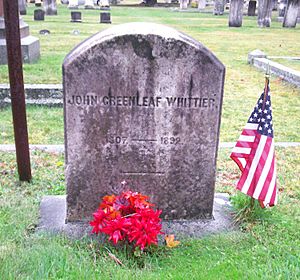
One of his most famous works, Snow-Bound, was published in 1866. Whittier was surprised by how well it sold. He earned $10,000 from the first edition, which was a lot of money back then. In 1867, he went to hear Charles Dickens read his works. Whittier wrote that Dickens had "wonderful dramatic power."
Whittier spent his last winters, from 1876 to 1892, at Oak Knoll. This was the home of his cousins in Danvers, Massachusetts.
In the summer of 1892, Whittier stayed with a cousin in Hampton Falls, New Hampshire. He wrote his last poem there, which was a tribute to Oliver Wendell Holmes Sr.. He died at this home on September 7, 1892. He was buried in Amesbury, Massachusetts.
Whittier's Poetry
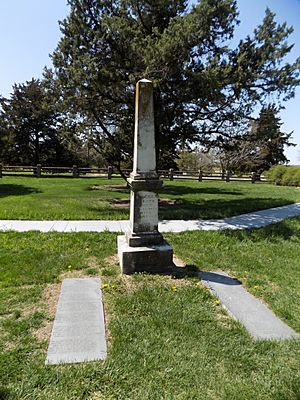
Whittier's first two books were Legends of New England (1831) and the poem Moll Pitcher (1832). He used his poetry to support his political beliefs, especially against slavery. This can be seen in his book Poems Written during the Progress of the Abolition Question.
He is best known today for his anti-slavery writings. Some of his other famous poems include Barbara Frietchie, "The Barefoot Boy", "Maud Muller", and Snow-Bound.
Many of his poems have been turned into hymns, which are religious songs. One example is Dear Lord and Father of Mankind. This hymn comes from his poem "The Brewing of Soma".
Whittier's Quaker faith is shown in this hymn:
O Brother Man, fold to thy heart thy brother:
Where pity dwells, the peace of God is there;
To worship rightly is to love each other,
Each smile a hymn, each kindly deed a prayer.
He also wrote poems that called for strong action against unfairness. For example, in his poem "To Rönge," he honored Johannes Ronge, a German rebel leader:
Thy work is to hew down. In God's name then:
Put nerve into thy task. Let other men;
Plant, as they may, that better tree whose fruit,
The wounded bosom of the Church shall heal.
Whittier's poem "At Port Royal 1861" describes abolitionists arriving at Port Royal, South Carolina. They came to teach and help slaves who were left behind by their owners. The poem includes a "Song of the Negro Boatmen," written in a special dialect:
Oh, praise an' tanks! De Lord he come
To set de people free;
An' massa tink it day ob doom,
An' we ob jubilee.
De Lord dat heap de Red Sea waves
He jus' as 'trong as den;
He say de word: we las' night slaves;
To-day, de Lord's freemen.
De yam will grow, de cotton blow,
We'll hab de rice an' corn:
Oh, nebber you fear, if nebber you hear
De driver blow his horn!
This "Song of the Negro Boatmen" was one of the most printed poems from the American Civil War. Even though Whittier never visited Port Royal, people there said his song was perfect for their situation.
Whittier's Impact and Legacy
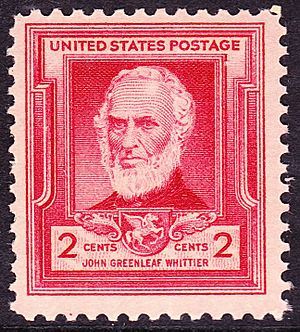
Whittier was very supportive of women writers. These included Alice Cary, Phoebe Cary, Sarah Orne Jewett, Lucy Larcom, and Celia Thaxter. He especially influenced Sarah Orne Jewett. They both believed that literature should teach good morals. Jewett even based some of her characters on people in Whittier's life.
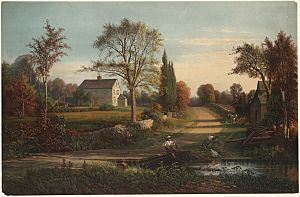
Whittier's family farm, called the John Greenleaf Whittier Homestead, is now a historic site. You can visit it. His later home in Amesbury, where he lived for 56 years, is also open to the public. It's known as the John Greenleaf Whittier Home.
Many places are named after him:
- His hometown of Haverhill has schools named J.G. Whittier Middle School and Whittier Regional Vocational Technical High School.
- The John Greenleaf Whittier Bridge carries Interstate 95 over the Merrimack River.
- A covered bridge in Ossipee, New Hampshire, is also named for him.
- The city of Whittier, California, is named after the poet.
- Other communities like Whittier, Alaska, and Whittier, Iowa, also bear his name.
- Neighborhoods in Minneapolis, Denver, and Boulder are called Whittier.
- Both Whittier College and Whittier Law School are named after him.
- Whittier Peak and Mount Whittier in Washington, and Mount Whittier in New Hampshire are mountains named after him.
Whittier was one of the writers featured in the 1897 card game Authors. This game used his writings like Snow-bound.
List of Works
Poetry Collections
- Poems written during the Progress of the Abolition Question in the United States (1837)
- Lays of My Home (1843)
- Voices of Freedom (1846)
- Songs of Labor (1850)
- The Chapel of the Hermits (1853)
- Le Marais du Cygne (September 1858 Atlantic Monthly)
- Home Ballads (1860)
- The Furnace Blast (1862)
- Maud Muller (1856)
- In War Time (1864)
- Snow-Bound (1866)
- The Tent on the Beach (1867)
- Among the Hills (1869)
- Ballads of New England (1870)
- Whittier's Poems Complete (1874)
- The Pennsylvania Pilgrim (1872)
- The Vision of Echard (1878)
- The King's Missive (1881)
- Saint Gregory's Guest (1886)
- At Sundown (1890)
Prose (Non-Poetry)
- The Stranger in Lowell (1845)
- The Supernaturalism of New England (1847)
- Leaves from Margaret Smith's Journal (1849)
- Old Portraits and Modern Sketches (1850)
- Literary Recreations and Miscellanies (1854)
Images for kids
See also
 In Spanish: John Greenleaf Whittier para niños
In Spanish: John Greenleaf Whittier para niños



